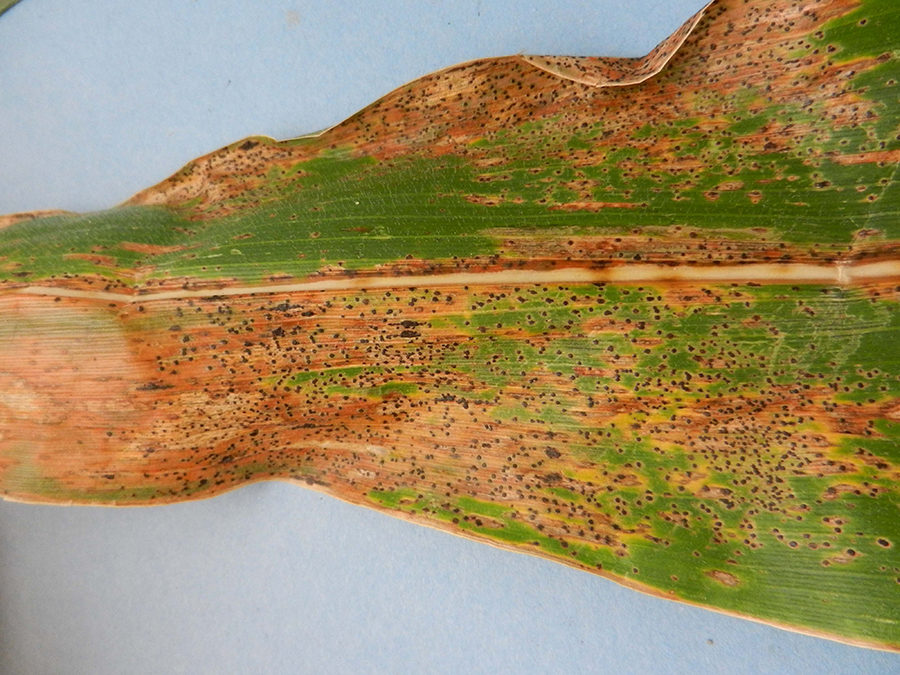By Kiersten Wise and Gail Ruhl, Botany and Plant Pathologists
Tar spot, a corn disease not previously reported in the U.S., was identified in Indiana this week. Samples submitted from an Indiana field in the Cass/Carroll county area were diagnosed at the Purdue Plant and Pest Diagnostic Lab (PPDL) and the causal fungus of tar spot, Phyllachora maydis, was confirmed by a National Plant Pathologist with the USDA Animal Plant Health Inspection Service in Beltsville, Md. This is the first confirmation of this disease in the U.S.
Symptoms of tar spot begin as oval to irregular bleached to brown lesions on leaves in which black spore-producing structures called ascomata form. These structures protrude from the leaf surface, giving the symptomatic areas of the leaf a rough or bumpy feel to the touch. The structures can densely cover the leaf, and may resemble the pustules present on leaves due to infection by rust fungi.
Lesions with these bumpy ascomata may coalesce to cause large areas of blighted leaf tissue, which can be mistaken for saprophytic growth on dead leaf tissue. Symptoms and signs of tar spot can also be present on leaf sheaths and husks.
Tar spot can be caused by two fungi, Phyllachora maydis and Monographella maydis. To date, only Phyllachora maydis has been found in Indiana. In the areas where this disease is commonly found (Central and South America), infection by Phyllochora maydis is not considered to significantly impact yield, but infections by Monographella maydis can cause economic damage. Infection and disease development occur under cool, humid conditions.
 Symptoms and signs of tar spot can resemble saprophytic growth on leaf tissue.
Symptoms and signs of tar spot can resemble saprophytic growth on leaf tissue.
We are still determining the impact (if any) that the disease may have in Indiana. At this point in the year, no in-season management is needed if the disease is present in Indiana fields. However, it is important to alert Extension specialists if you observe the disease to accurately document distribution in the state. If you suspect you have tar spot, please submit samples to the PPDL for diagnosis. More information on sample submission can be found here.
 Black spore-producing structures of the fungus that causes tar spot.
Black spore-producing structures of the fungus that causes tar spot.
In the coming weeks, we hope to determine how this fungus arrived in Indiana and what, if any, measures need to be taken to prevent future disease outbreaks. The causal fungi of tar spot have not previously been reported to be seedborne, so there are no phytosanitary restrictions to this confirmation.
For more information on tar spot of corn, please see the USDA-ARS Diagnostic Fact Sheet: Invasive and Emerging Fungal Pathogens – Diagnostic Fact Sheets.






